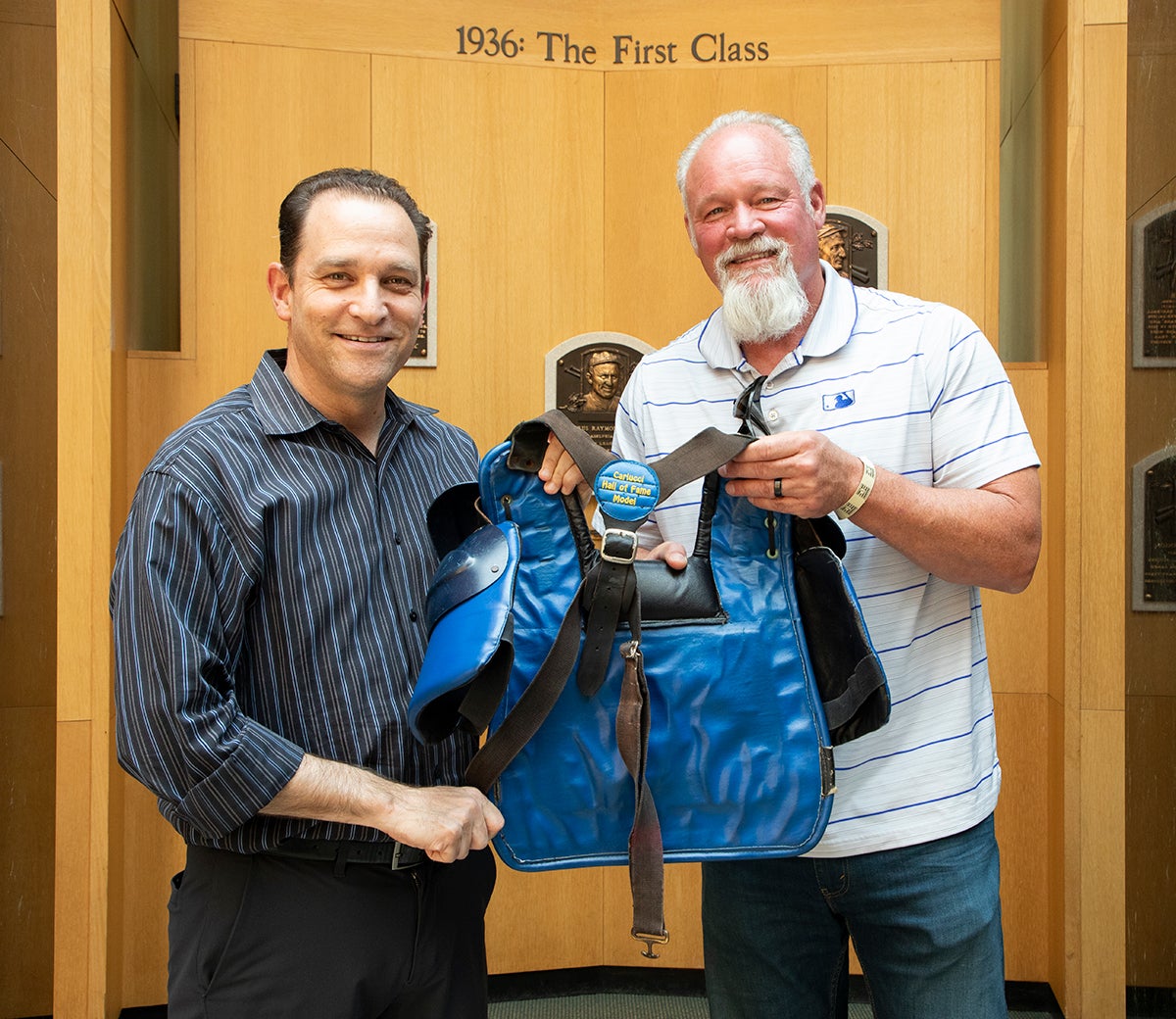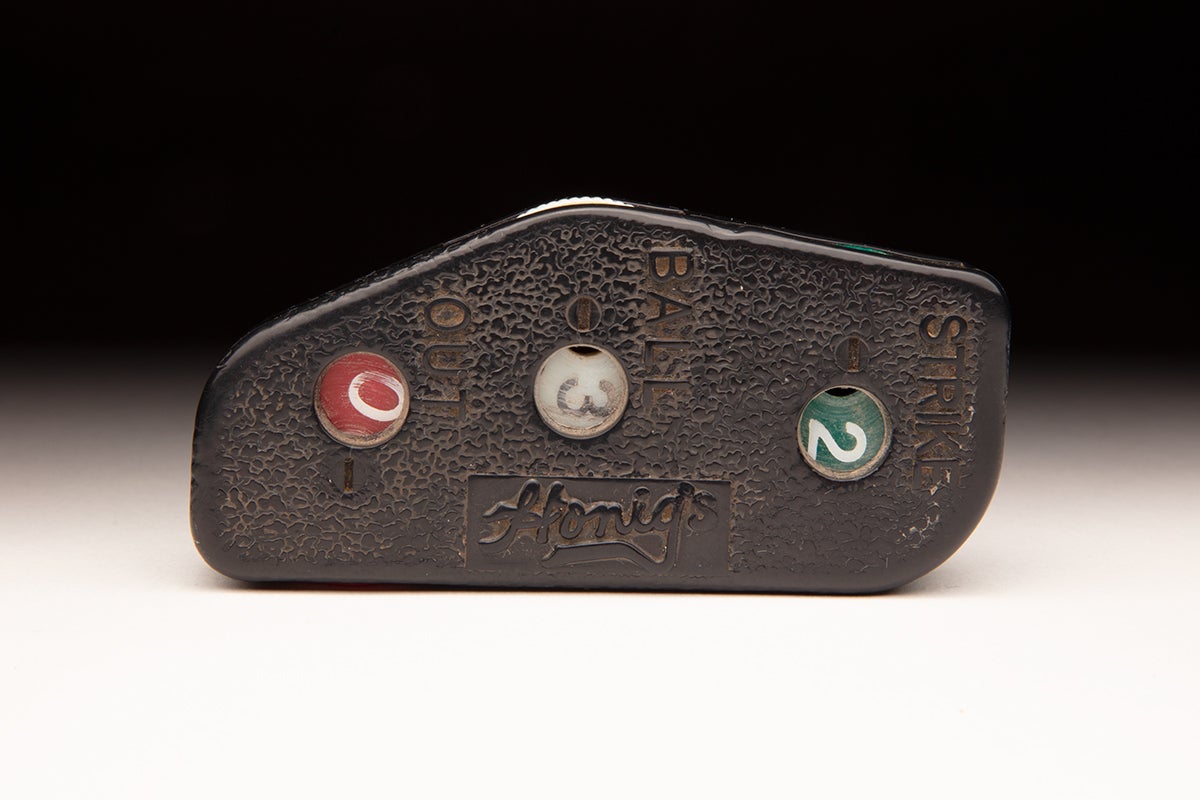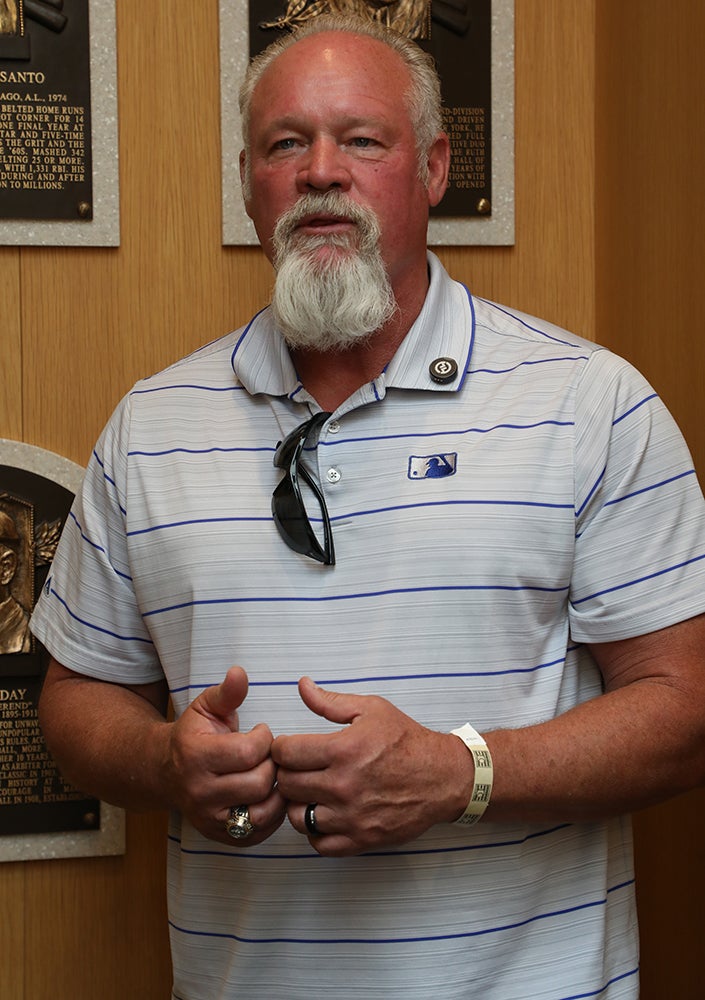Umpire Ted Barrett leaves his mark in Cooperstown
Longtime big league umpire Ted Barrett has been out of the game for a few years now, but even after spending his entire adult life in the game and on its grandest stages there are still moments he misses.
“If you talk to any former player, what they miss is the clubhouse,” he said. “For me, it’s not being on the field, but playing cards before the game and having laughs and that camaraderie. With umpires, for the four of us, it’s us against the world. And we were a very tight-knit group. And for some of us, we worked together for many, many years.
“And just the other day, I went to a Diamondbacks game, and Lance Barksdale was there. He was on my crew for many years and now he’s a crew chief. I’m so proud to watch him be successful and work the World Series.”

On June 5, Barrett participated in a Voices of the Game program at the National Baseball Hall of Fame and Museum’s Bullpen Theater. The accomplished arbiter, who worked dozens of jewel events and notable games over his 29 major league seasons, was in Cooperstown to donate a prized artifact from his storied career – a chest protector he got in 1992 when he was working in the Texas League and it lasted for his entire career.
“In 2018, one of my most memorable games, I worked home plate in the World Series, Game 3, which went seven hours and 20 minutes. The Dodgers ended up beating the Red Sox, 3-2, in 18 innings,” Barrett recalled. “And the people at the ballpark said afterwards, ‘Would you be willing to donate something to the Hall of Fame?’ And I said, ‘Yeah, you could have my indicator.’ And I left it on 3-and-2, the count when Max Muncy hit the walk-off home run.
“So, the guys always joke because this is kind of an iconic chest protector in the umpire world… They always said, ‘Ted, that’s got to go in the Hall of Fame when you retire. It’s got to go to Cooperstown.’ So, my last year, I wasn’t sure if I was going to retire, but I knew the chest protector was done. It had run its course. The pads were thin and I was going to break a rib if I wore it much longer. I thought this is the place it should be rather than sitting in my closet. People who like umpiring, they’ll appreciate seeing it.”

The blue chest protector has an embossed label reading “Carlucci Hall of Fame Model.”
“Cecil Carlucci was a Pacific Coast League umpire back in the ’50s and after he got done umpiring, he started to make these chest protectors,” Barrett said. “He called it the Hall of Fame model. And it’s kind of cool that we had no idea that maybe one day it would be in Cooperstown. And here it is.”
Barrett, 59, joined the American League umpiring staff in 1994, then when the two leagues consolidated their crews in 2000 he continued until his retirement in 2022. Promoted to crew chief in 2013, he worked in 33 postseason series, which is tied for most all-time.
In total, Barrett worked 3,400 regular season games, ejecting 65 individuals over that span. Arguably the most noteworthy came on Aug. 14, 2007, when he tossed future Hall of Fame manager Bobby Cox, the 132nd of the then-Braves skipper’s career and surpassing John McGraw for the major league record.
Other notable contests included being the home plate umpire for David Cone’s perfect game for the Yankees against the Montreal Expos on July 18, 1999; on June 13, 2012, when Matt Cain pitched a perfect game for the Giants against the Astros; when Angels pitcher Ervin Santana threw a no-hitter against Cleveland on July 27, 2011; and on Aug. 7, 2004, for Greg Maddux’s 300th win.

“If you think of those situations, everything’s magnified. So that is what the pressure is. As a plate umpire, you established your strike zone, and you tried to be consistent. And now you have to not just be consistent, but you have to be accurate,” Barrett said. “And in that perfect game situation, you had to be accurate because if it was a 3-and-2 pitch that should have been a ball that I called strike three, well, everybody would say, ‘Look, he got a perfect game and he didn’t deserve it.’ Or if it was strike three and it’s ball four, you know, he cost him the perfect game.
“You’re not worried about the fame, you’re just worried about getting the call right. There’s pressure on the umpire. I feel like I caught lightning in a bottle twice being able to stand behind the plate and be a part of a perfect game.”
Barrett, whose only other visit to the Baseball Hall of Fame came during a family trip when he was 12 years old, marveled at the feelings that bubbled up when he strolled throughout the Cooperstown institution.
“The fan kind of goes out of you when you’re an umpire and it becomes a job, it becomes a grind. But coming here kind of reminds me of the romance of baseball. I’m getting a little emotional thinking about it,” Barrett said. “The story that I was reminded of came in 2016 when I was working the National League Championship Series. That was the year the Cubs won. I worked Game 6, when they clinched over the Dodgers, and our clubhouse guy named Tom, a Chicago fireman, asked me if he could bring his kids down. I told him, ‘Absolutely.’ They were hugging and crying, and they said, ‘I wish grandpa was here.’
“It reminded me of how special the game is. It goes beyond just ball, strike, safe, out. It is America. It’s our fabric.”
Bill Francis is the senior research and writing specialist at the National Baseball Hall of Fame and Museum
